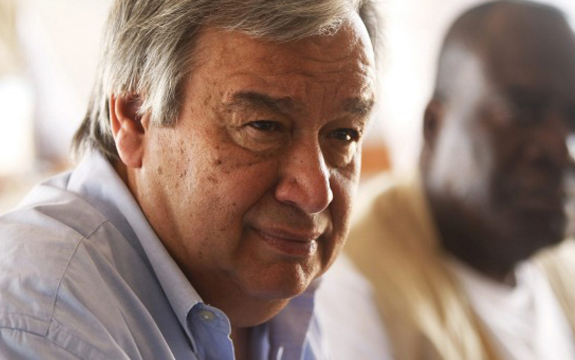Hospitality for asylum seekers? Think again

In Summary
Klaus Neumann, Swinburne University of Technology
This originally appeared in The Age. Read the original article.
"There is a cunning sleight of hand used by those who seek to denigrate us," former immigration minister Amanda Vanstone wrote in Fairfax Media this week. "They say that there are millions of asylum seekers around the world and countries that hundreds of thousands enter every year. They go on to say that the proportion we take is tiny in comparison. That's the biggest hoodwink there ever was. Actually, that's beating around the bush – it's a con and a great big fat lie."
According to statistics compiled by the UN High Commissioner for Refugees, there were 59.5 million displaced people worldwide at the end of 2014. During that year, the UNHCR reports, Australia received 8960 new asylum applications and resettled 11,570 refugees. Taken together, this amounts to 20,530 people. With all due respect, Amanda Vanstone, that is indeed a tiny proportion of 59.5 million.
In one respect, Vanstone is correct: Australia resettles a large proportion of the refugees who are resettled under the auspices of the UNHCR. Last year, Australia took more than a 10th of these refugees, making it the third-largest contributor behind the United States (which resettled about 70 per cent of the total) and Canada. But resettlement is offered to only a small fraction of the world's displaced people: in 2014, a total of 105,197 places in 26 countries.
It is important to put Australia's contribution in a global context. So here's another set of numbers. The greatest number of "boat people" to arrive in Australia in any one year – 20,587 individuals – came in 2013. How does this number compare internationally?
Last month alone, more than 50,000 irregular migrants, many if not most of them refugees, arrived in Greece, a country with less than half of Australia's population which is, as we all know, in dire economic straits. Last year, 28,000 new asylum applications were made in Austria, a country with just over a third of Australia's population. And Sweden, whose population is just over 40 per cent of Australia's, dealt with some 75,000 new asylum applications. Like most European countries, Sweden and Austria are on track to receive a larger number of asylum seekers this year. (Incidentally, Sweden's contribution to the 2015 UNHCR budget is more than three times that of Australia.)
Global displacement requires a global response. Ideally, of course, such a response would tackle the root causes of displacement. In the meantime, it is important that countries around the world share the burden of accommodating displaced people. Currently, a small number of countries that are significantly poorer than Australia – Turkey, Pakistan, Jordan, Lebanon, Iran, Ethiopia – are accommodating almost half of the world's refugee population. Clearly, affluent countries, such as Australia and Sweden, should play a bigger, indeed leading role in resettling refugees and in accommodating asylum seekers.
Is the problem just too big, though? António Guterres, the UN High Commissioner for Refugees, says that we are witnessing "an unchecked slide into an era in which the scale of global forced displacement as well as the response required is now clearly dwarfing anything seen before". But that is misleading. In proportion to the global population, displacement was worse during and in the immediate aftermath of the Second World War. In fact, according to some estimates, displacement in China alone during the war was higher than it is today worldwide.
In the second half of the 1940s, too, the number of displaced people who were offered permanent resettlement places by the IRO, the UNHCR's predecessor, was small in comparison to the overall number of displaced people. Only Europeans qualified. Palestinians; Chinese fleeing to Hong Kong; Bengalis displaced by the partition of India – none of these were offered places.
Yet the IRO organised the resettlement of more people a year in the late 1940s and early 1950s than the UNHCR does now. The traditional immigration countries, including Australia, were willing to take in substantial numbers of displaced people from Europe. In 1949 alone, Australia resettled more than 75,000 people through the IRO. At the time, Australia had a population of just over 7 million, or less than a third of its current population, and was in the midst of a severe housing shortage.
So is Vanstone right after all? Has Australia – in the long run – been one of the most generous nations in the world? Citing the 1949 statistics in support of such a claim would be tantamount, to use Vanstone's words, to peddling the false comparison. Australia resettled DPs because it wanted immigrants, and the fact that many of these immigrants happened to be refugees was incidental.
Now, Australia has the opportunity to be generous. It has the capacity to boost its resettlement intake and substantially increase its financial contribution to the UNHCR. And, we should hope, it has the capacity to end the punitive detention of people who have committed no crime other than seeking our protection.
Klaus Neumann is professor of history in the Swinburne Institute for Social Research and the author of Across the Seas: Australia's Response to Refugees.

